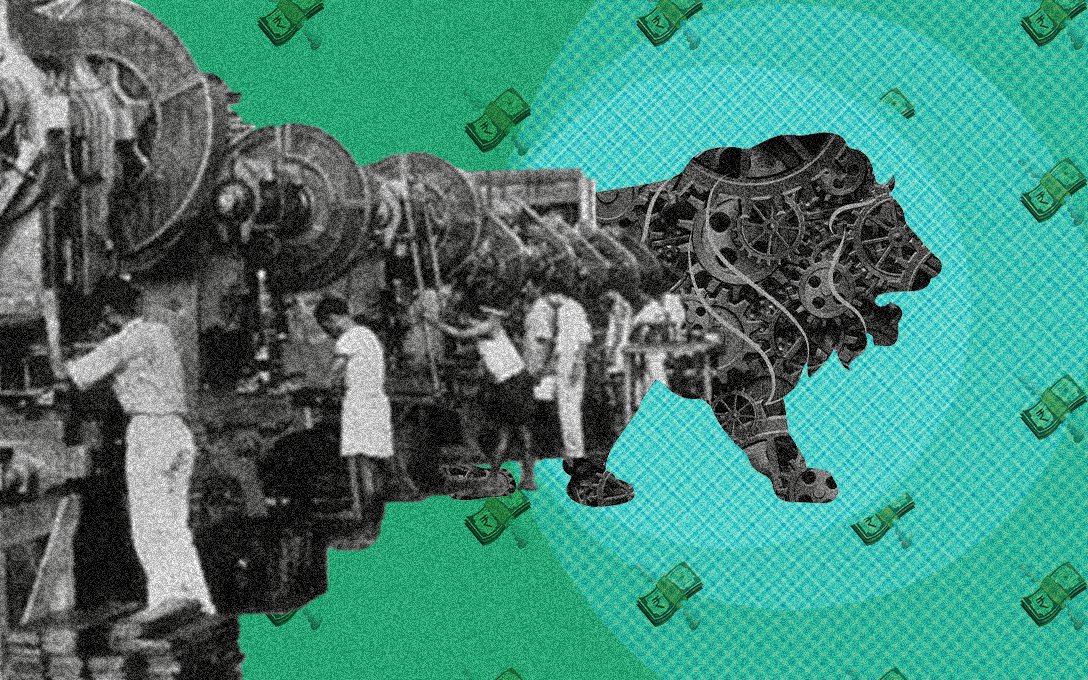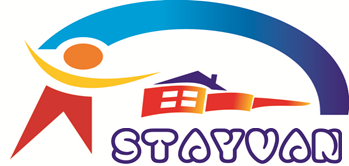PLI, AN INCUBATOR FOR INDIA’S MANUFACTURING ECOSYSTEM

EFFORTS TO MAKE IN INDIA
Manufacturing is considered the backbone of a country’s economic development. The transition from an agriculturally based economy to a country powered by manufacturing, have been rather feeble for the past 70 years. As the ambitious ‘Make in India’ lost momentum even before the pandemic, the Modi government announced the Atmanirbhar initiative to keep the spur alive among India’s economic patriots.
Continuous innovative government initiatives were essential when tariff measures and the de-linking of imports failed to spark the desired manufacturing ethos that India was working towards. With this backdrop came the PLI scheme announcement – aimed to forge India as a ‘world’s manufacturer’ and an export hub.
The PLI schemes entail incremental manufacturing incentives for players in 13 crucial sectors – Advance Chemistry and Cell Battery, Electronic products, Automobiles and related components, Pharmaceuticals, Telecom and Networking goods, Textiles, Food products, Solar PV, White goods, Speciality steel, and IT hardware; with an average allotment of Rs. 14,600 crores per sector, with Automobiles attracting the highest allocation of Rs. 57,042 crores. It involves payment of incentives of 4-6% on incremental sales of goods manufactured domestically over a five-year tenure. PLI is designed to make Indian manufacturers globally competitive, and cajole foreign investments.
ON-GROUND DEVELOPMENTS OWING TO PLI
PLI has received a positive response from not just domestic manufacturers but MNC’s have shown great enthusiasm to set up shops in the country on the back of these incentives. During the pandemic, 11 contract manufacturers of apple shifted their units from China to India. Even though a key motivation for such a move was China plus one – diversify the business away from China, these manufacturers were enticed by the incentives India had to offer. By the timely announcement of the PLI, India struck the right chord at the right time.
The implementation of the scheme has come a long way since its announcement in April 2020, wherein PLI was announced only for large-scale electronic manufacturers. In July, the PLI scheme was made applicable for bulk drugs and medical devices. 6 months after the April announcement, the application of Samsung, Foxconn Hon Hai, Pegatron, Rising Star and Wistron were approved along with domestic makers like Lava and Micromax. With this better-than-expected response from local and international companies, the government extended the umbrella in November to cover 10 more sectors instead of only electronics and pharmaceuticals. Now, the government in February further extended the scope of the PLI to IT hardware on the back of tremendous progress being witnessed in earlier announced sectors. Besides, Rs. 15,000 crores further allocation was made for pharma.
Dissecting these sectors, we discuss what objectives are the government trying to achieve from each sector, and what development is surfacing at the very ground level.
- The Rs. 18,100 crores allocation made to Advance Chemistry Cells is aimed to primarily incentivise the production of newer technology batteries, namely Lithium-Ion. These are used mainly in consumer electronics, electric vehicles and renewable energy. Real developments are being made, for instance, Tata chemicals have acquired land at Dholera region of Gujarat to set up a manufacturing facility for manufacturing Lithium-Ion cells and will avail incentives announced under the PLI. Moreover, prominent players like Exide Batteries and Amara Raja are anticipated to diversify into this space to take advantage of PLI.
- Rs. 5,000 crores allocated to bolster manufacturing in the Electronics field, with more timely incremental allocations being made to extend its scope, have yielded noticeable progress. Xiaomi, the largest smartphone player in India is setting up new shops in Tamil Nadu and Haryana. Along the same lines, the Cupertino-based technology giant, Apple, is lobbying for a bigger budgetary outlay of $2.7 billion for the commencement of iPad production. This is in addition to investment inflows from Apple’s contract manufacturers during COVID-19.
- As the largest recipient of the PLI, the Automobile sector was allocated Rs. 57,042 crores to exploit growing vehicle demand, especially in the trending EV space. This allocation is also assigned to the picks and shovels in the industry which supply key components. The developments attributable to PLI in this sector has been muted given the chip shortage coupled with the current slump in demand. Nonetheless, players like Baja Auto, Bharat Benz, and Ashok Leyland are in talks to set up new manufacturing plants to avail PLI incentives.
- Under the PLI scheme, the government recently approved the deployment of Rs 15,000 Crores over a five-year period for the Pharmaceutical sector. We are heavily reliant on imports of bulk drugs – the raw material for medicines, despite being the third-largest pharma player by volume. Thus, to reduce this reliance and insulate the industry from external shocks, PLI has a significant bearing. The ministry received 215 applicants from 83 pharma manufacturers and 28 applications from 23 medical device manufacturers – underlining a positive response. As of date, 19 applicants have received approvals to produce special bulk drugs – entailing an investment outlay of above Rs. 4,600 crores and creation of 1,700 plus job rolls. Namely, players such as Aarti Speciality Chemicals Limited, Meghmani were the ones to receive approvals. Specifically, Aurobindo Pharma received two approvals for setting up antibiotic production units, with a total investment commitment of 3,039 crores. Furthermore, the majority of applications are in the pipeline pending approval, which is likely to be finalised by March 31st.
- Considered to be the pillar of ‘Digital India’, the Telecom sector has been allocated Rs. 12,195 crores. This encompasses namely the radio access and wireless equipment for a smooth transition to a 5G era. Domestic players like Tejas Networks, HFCL, and Sterlite Technologies have raised interest, and we expect industry leaders namely Cisco, Nokia, and Ericsson to avail the scheme.
- Rs. 10,683 crores have been allocated to strengthen the Textiles climate, with an increased focus on Technical textiles and manmade fibres. Given the increasing competition from neighbouring countries like Bangladesh and Vietnam, coupled with the potential to upsize the 5% share in global trade that India currently holds, this scheme will be instrumental. Rama Synthetics Ltd, a prominent textile player has raised interest in setting up capacity to avail the PLI incentives. Other industry players like KPR Mill, Gokaldas Exports, and Arvind are expected to announce capacity expansions linking to the scheme.
- Solar PV’s will be momentous in achieving the Modi government’s 2030 target of setting up 450 GW of renewable energy sources. TATA Power, Adani Green and Jinko solar are likely to be some names to benefit from this Rs. 4,500 crores allocation.
FAVOURABLE SHIFT IN INVESTMENT CLIMATE
On a broader context, on the back of Atmanirbhar and boosted indigenisation initiatives, the imports from China reduced by 10.87% in 2020 compared to 2019, while exports to China increased by 16.15%, enabling a reduction in trade deficit with China. In the bulk drug sector, wherein we rely on China for 70% of our requirement, we forecast a dramatic reduction in this dependence to just above $1 billion compared to the current $2.4 billion. A similar reduction will be witnessed in most if not all sectors, namely, Solar PV’s and automobile component sector.
Post-COVID restrictions, prominent MNC’s, have started to engage with respective ministries and government to set up manufacturing facilities. Companies like Xiaomi are trying to avail the PLI scheme, at least through contract manufacturers, to get a slice of these benefits. The applicability of incentives for Chinese companies is still a grey area. Other global electronics manufacturers – Vivo and Samsung are also exploring further opportunities in our market. We saw in October of last year, prominent names like Samsung, Foxconn Hon Hai, Pegatron, Rising Star and Wistron receiving early approvals for the PLI scheme.
Moreover, a vast number of foreign companies are keen on becoming part of the Indian manufacturing ecosystem because of the friendly 15% tax rate, reach to a large domestic market and cheap labour costs.
GREEN PORTFOLIO smallcases
Considering the high concentration in our smallcase portfolio, of companies belonging to the mentioned sectors, the companies in our ‘high-quality right price’
and ‘dividend yield’
portfolio have expressed interest in expanding manufacturing capacity on the back of the PLI scheme announcement. Namely, KPR Mill would be setting up a garment facility with a capacity to produce 42 million units per annum in FY22, and will avail the PLI. Similarly, Sterlite Technologies is studying how they can benefit from the capacity expansion of 4G/5G wireless radio access equipment with PLI. The automobiles sector receiving a lion share in allocation, ABB Power Systems will be a key beneficiary considering that 65% of cars manufactured in India is painted by ABB’s robots and paint systems. Similarly, capital good companies in our portfolios namely GE, Cummins and Ingersoll Rand will be indirect beneficiaries – as sectors they cater to are allocated large sums under the PLI.
The sectors identified above are witnessing tremendous inflows and are firing on all cylinders. The announcement of the PLI scheme on the back of ‘Atmanirbhar Bharat’ and ‘Make in India’ have started to show green shoots. Players in each above-mentioned sector have either begun to utilise the scheme through expansion or are currently in preliminary stages of investment – engagement/talks with relevant ministries.
These evident on ground developments show a remarkable response from the respective sectors, and the current trajectory underlines the progress we are making towards achieving the goal of making India an integral part of the global supply chain.
All in all, with advantageous incentives in place for incoming and existing manufacturers, we expect the manufacturing output growth to resume after this challenging financial year. For FY21, we expect a 5% contraction in manufacturing output to Rs. 372 crores followed by a 31% expansion by the end of FY23 to Rs. 500 crores. With this, we continue to concentrate our all four smallcase portfolios with companies that are well-posed to exploit this new wave of policies accompanied by growth.
You can also check out our very new smallcase ‘(*New) Best Multi National Companies‘ with a strategy to invest in growing MNCs that are available at reasonable valuations.



























































 Green Portfolio
Green Portfolio
